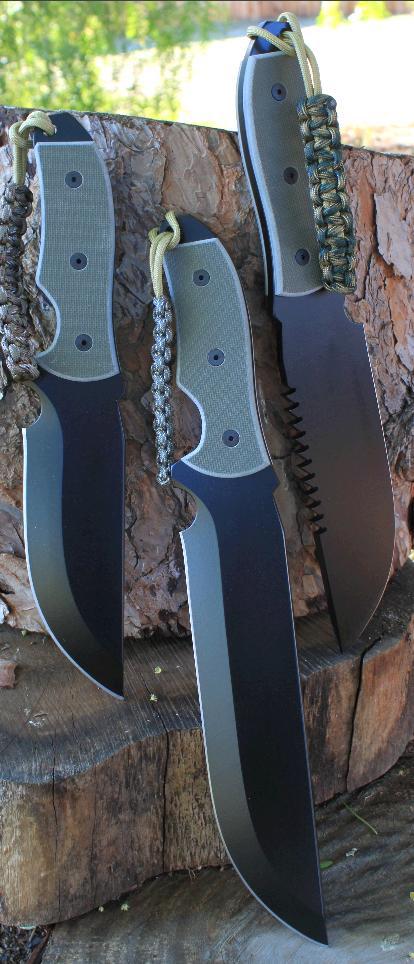SINGLE BEVEL FIXED BLADES
My personal preference is single-bevel for hard use knives, and we've been getting a lot more requests for single bevel, so we figured it was about time we put some info on the site about the "whys and wherefores." Let us know if you have any questions that this doesn't cover. --Mike
Single Bevel - Definition:
The term Single Bevel (or chisel grind) means ground like a chisel. This means that the blade is ground on one side only, the other side is flat. This produces a blade with exceptional strength and a sharp edge, that cuts aggressively and is very easy to sharpen.
Single Bevel vs. Double Bevel
Many people prefer the symmetry of double-bevel. However, the single-bevel knife designs provide an exceptionally strong, sharp edge that is easy to sharpen in the field. There isn't always a lot of time available for sharpening, and with the single-bevel you only have to sharpen one side and lightly strop the other.
Many of our knives were designed specifically to be a single bevel blade. As a survival/primitive skills blade the single bevel is very efficient for chopping and notching for building sniper hides, lean-tos, and dead-fall traps.It also works well for door breaching and shimming. As a weapon, the single bevel cutting edge is very effective, primarily because it has virtually no shear on one side. In a thrust, it creates a bilaterally asymmetrical wound, resulting in in quicker hypovolemic shock from rapid blood loss. It is also easier to sharpen in the field, since you only sharpen one side, which is a relatively long, flat edge, then you make a couple of quick passes on the opposite side to clean the burrs off the edge.
Sharpening Your Single Bevel (Chisel Grind) Knife
Using your ceramic rods you should be able to get a really excellent working edge. Being a single-bevel it'll actually be easier to sharpen than a double bevel once you get the hang of it. On the beveled side I put a wide grind line on there so you'll be able to rock that flat part onto your ceramic rod and then slide it along perpendicular to the rod. After a few strokes you may find a slight burr on your edge; just do a couple of quick passes on the flat side of your edge. Repeat the process until you have a sharp working edge. When I put on an edge here at the shop I make sure the knife'll shave hair on my arm, but I want it to be a raspy kind of shave to confirm that I have a toothy edge. The reason is, this kind of an edge "grabs" most media a lot better (like meat, rope, etc) and cuts more aggressively and effectively. Since the edge has little ridges on it from this process you should be able to get a similar edge when you use your rods. If you're having any problem telling where the rod is making contact with your edge just take a magic marker and mark a black line on the edge.

